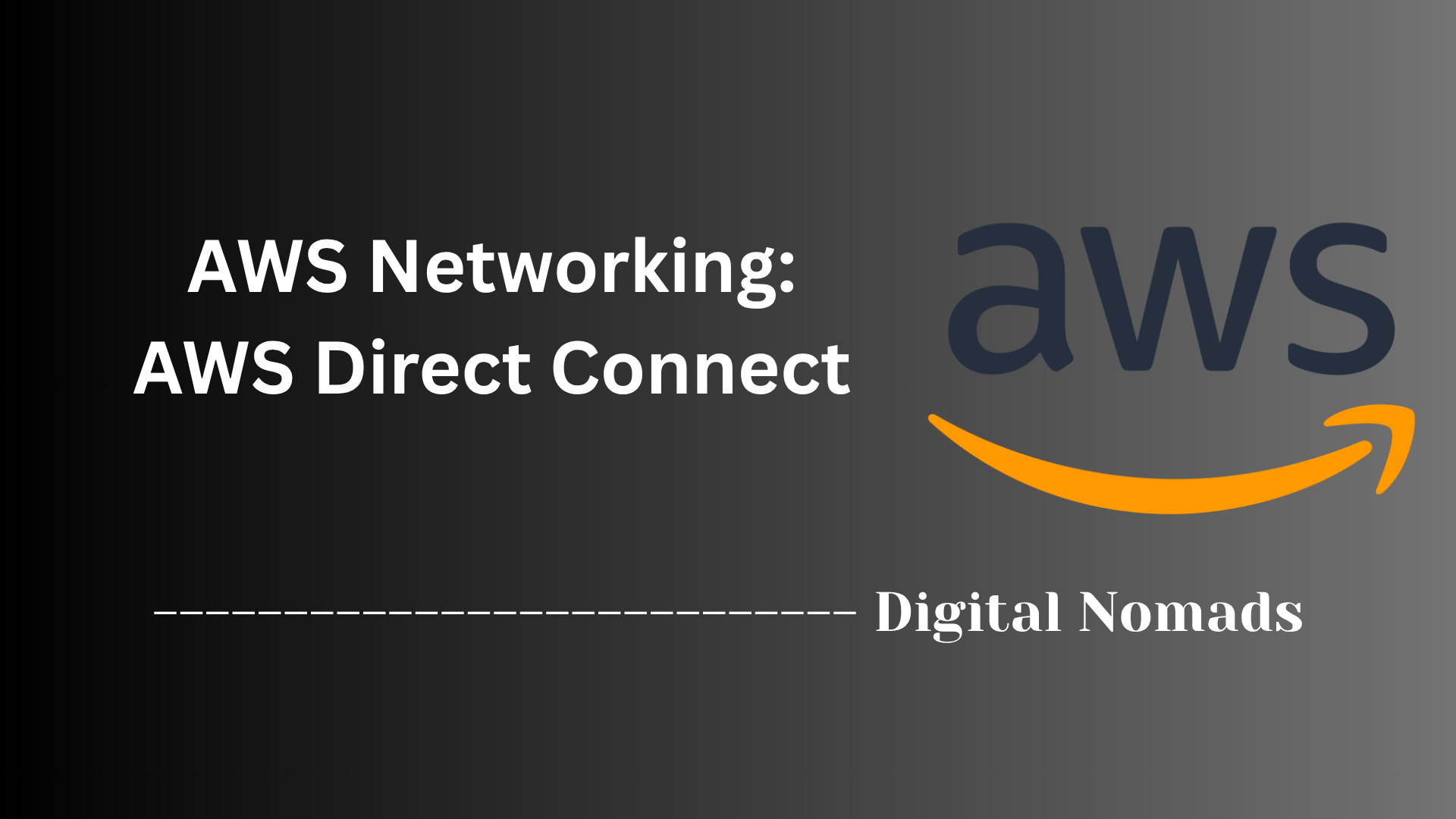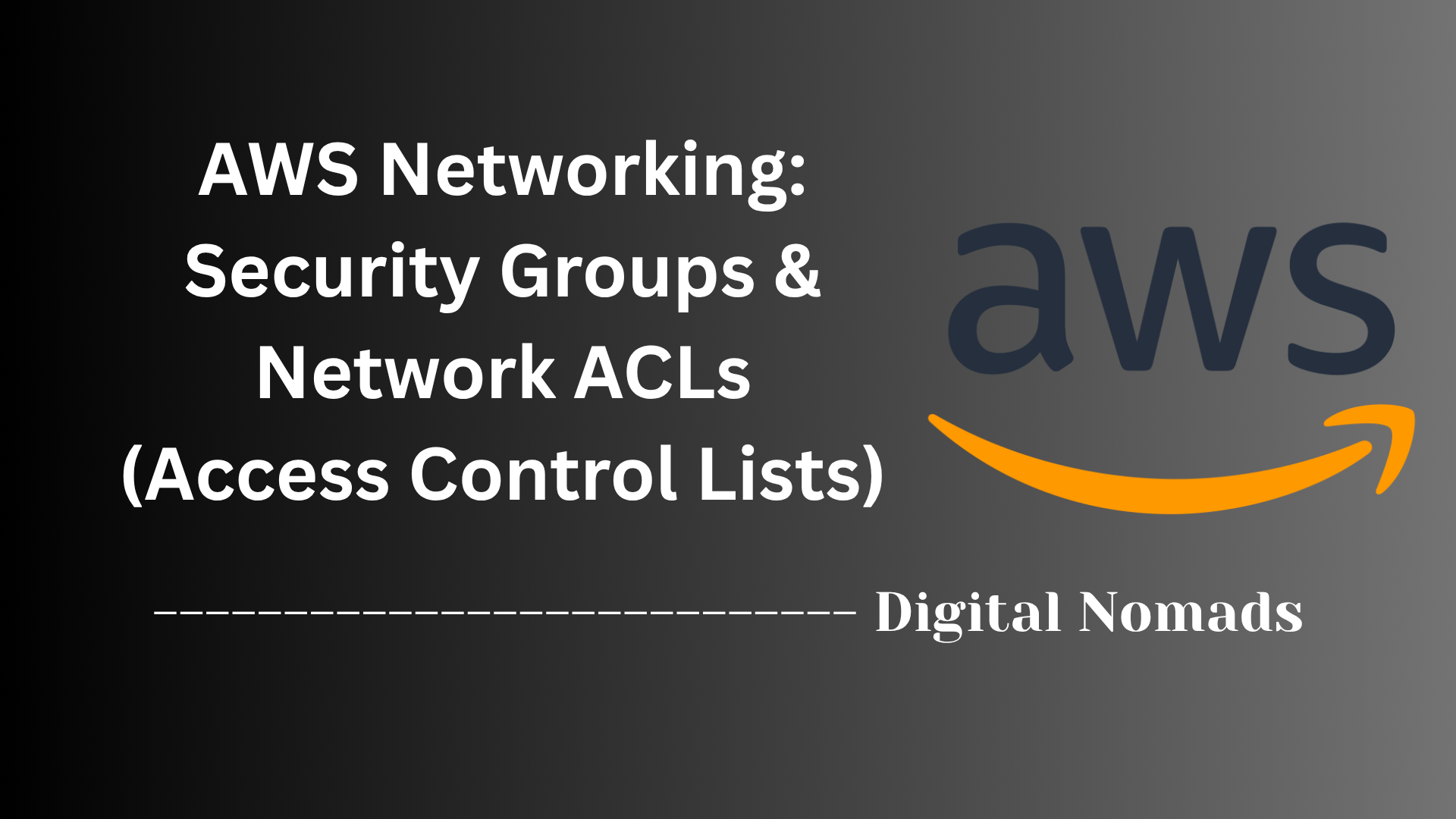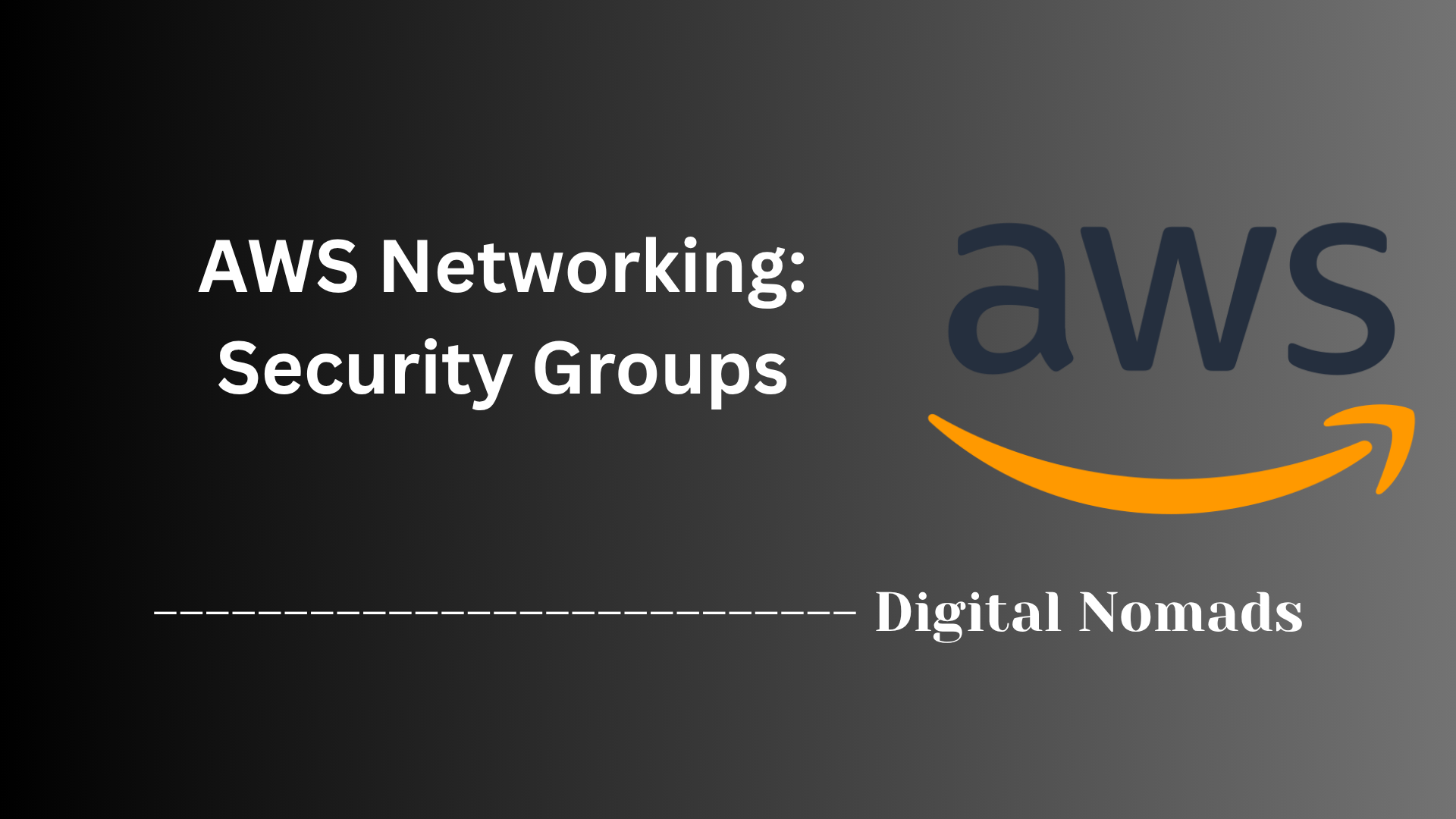Table of Contents
- Overview
- VPC Peering
- Transit Gateway
- Comparative Table
- Regional and Pricing Notes
- Best Practices & Limits
- Conclusion
AWS Networking: VPC Peering & Transit Gateway
Overview
AWS Networking is a foundational piece of building scalable, secure, and flexible cloud environments. Two central features in Amazon Web Services for private network architecture are VPC Peering and Transit Gateway.
What Is It?
- VPC Peering connects two Virtual Private Clouds (VPCs) directly, allowing resources in those networks to communicate privately and securely as if they were within the same network.
- Transit Gateway acts as a centralized cloud router, enabling connections among multiple VPCs, on-premises networks, and AWS services through one central hub.
Why You Need to Know About It
- Secure Communication: Both options let you create isolated cloud networks that can privately share data without exposing traffic to the public internet.
- Scalability & Flexibility: As your infrastructure grows (additional VPCs, new teams, hybrid environments), these tools help manage increasing complexity.
- Cost-Efficiency: Properly designed networks reduce operational overhead and optimize network traffic flows, improving performance and keeping costs in check.
- Centralized Control: Especially with Transit Gateway, you can manage connectivity, route traffic, and apply network policies across your organization’s environments from a single location.
How It Works
VPC Peering
- Creates a one-to-one, point-to-point private connection between two VPCs.
- Communication is direct and does not support transitive routing—each connection is exclusive to the two VPCs involved.
- Traffic never leaves the AWS backbone, ensuring privacy and low latency.
Transit Gateway
- Acts as a hub-and-spoke router in the cloud.
- Multiple VPCs and external networks (like on-premises data centers) can attach to the gateway.
- Offers transitive routing, meaning any attached network can exchange traffic with any other, all managed centrally.
- Scales seamlessly with more VPCs or as your company’s network needs expand.
Understanding these networking options prepares you to design robust, secure, and scalable AWS environments that can grow with your business needs. Whether your architecture is small and straightforward or vast and interconnected, leveraging VPC Peering and Transit Gateway appropriately is key for success in the AWS cloud.
VPC Peering
Amazon VPC Peering enables private connectivity between two Virtual Private Clouds (VPCs), allowing secure and direct communication without traversing the public internet. Here’s a step-by-step overview for understanding and setting up VPC Peering:
-
Understand VPC Peering:
- Establishes a one-to-one connection between two VPCs in the same or different AWS accounts or regions.
- Transitive peering is not supported (traffic cannot pass through an intermediate VPC).
- Both VPCs must have non-overlapping IP address ranges.
-
Preparation:
- Ensure both VPCs have distinct, non-overlapping CIDR blocks.
- Determine the AWS accounts and regions for the peering connection.
-
Initiate a Peering Connection:
- From the AWS Management Console, go to the VPC dashboard and select Peering Connections.
- Click Create Peering Connection.
- Select the requester VPC and the accepter VPC (specifying account and region, if cross-account or cross-region).
- Provide a name and description for reference.
-
Accept the Peering Connection:
- From the accepter VPC’s account, review and accept the peering request.
- Once accepted, the connection is established but not yet routable.
-
Update Route Tables:
- In each VPC, add routes to the relevant subnets in the other VPC, targeting the peering connection.
- This enables private traffic between instances in each VPC.
-
Adjust Security Groups and Network ACLs:
- Modify security group rules to allow traffic from the peer VPC’s CIDR block as needed.
- Check network ACLs to verify that desired traffic is permitted.
-
Test Connectivity:
- Verify that instances in both VPCs can communicate using private IP addresses.
- Troubleshoot using VPC Flow Logs if connectivity is not working as expected.
Best Practices:
- Plan VPC CIDR ranges up front to avoid overlap.
- Document peering connections for governance and compliance.
- Monitor peering traffic with VPC Flow Logs for security and troubleshooting.
Transit Gateway
AWS Transit Gateway is a highly scalable and flexible cloud router service that simplifies network connectivity across multiple VPCs, on-premises environments, and AWS services. Here’s a step-by-step overview for understanding and setting up a Transit Gateway:
-
Understand Transit Gateway:
- Acts as a central hub (router) for connecting multiple VPCs and networks.
- Enables transitive routing — VPCs and other networks attached to the Transit Gateway can communicate with each other without the need for direct peering.
- Operates at regional level but can be extended for cross-region connectivity.
-
Preparation:
- Determine which VPCs, on-premises networks (via VPN or AWS Direct Connect), and services need to connect.
- Plan for network segmentation and traffic flows using transit gateway route tables.
-
Create the Transit Gateway:
- Go to the VPC dashboard, select Transit Gateways, then click Create Transit Gateway.
- Specify configuration options such as name, description, and default route table behavior.
-
Attach VPCs and Other Networks:
- From the Transit Gateway console, choose Create Attachment.
- Select the attachment type (VPC, VPN, Direct Connect, or Peering).
- For each VPC or network, set the target subnets for attachment.
-
Configure Transit Gateway Route Tables:
- Edit the Transit Gateway route tables to control traffic flow between attached networks.
- Associate attachments with specific route tables based on segmentation or shared access needs.
-
Update VPC Route Tables:
- In each attached VPC, update route tables so that traffic destined for other VPCs or networks is routed via the Transit Gateway attachment.
-
Test Connectivity:
- Verify that VPC instances can communicate as intended with other VPCs and networks attached to the Transit Gateway.
- Use flow logs and built-in AWS monitoring for troubleshooting.
Best Practices:
- Use separate Transit Gateway route tables to segment environments (e.g., dev, test, prod).
- Tag resources for easier tracking and governance.
- Monitor Transit Gateway performance and logs for visibility and compliance.
- Consider resource quotas and costs associated with attachments and data processing.
Comparative Table: VPC Peering vs Transit Gateway
Below is a step-by-step comparative overview of VPC Peering and Transit Gateway to help decide which solution best fits different AWS networking use cases.
| Feature | VPC Peering | Transit Gateway |
|---|---|---|
| Network Model | Peer-to-peer (mesh) Each VPC needs a direct connection to every other VPC. |
Hub-and-spoke All VPCs connect through a central gateway. |
| Transitive Routing | Not supported Traffic cannot pass through intermediary VPCs. |
Supported VPCs and networks can communicate via the gateway. |
| Scalability | Limited (complex at scale) Each new VPC increases the number of connections. |
Highly scalable Centralized connectivity for dozens or hundreds of VPCs. |
| Latency | Low Direct routes between VPCs. |
Slightly higher Traffic passes through the gateway hub. |
| Cost | Lower for small and simple setups Charged mainly for data transfer. |
Higher Charged for attachments and data processing, more cost-effective at scale. |
| Management | Manual Route tables and security rules updated per connection. |
Centralized Managed through Transit Gateway route tables and attachments. |
| Cross-Region Support | Supported With inter-region peering. |
Supported With inter-region Transit Gateway peering. |
| Best Use Cases | Few VPCs, simple connections, no need for transitive routing. | Enterprise, complex, or multi-account environments; need for centralized routing. |
Pro Tips:
- Start with VPC Peering for straightforward, small-scale designs.
- Adopt Transit Gateway for centralized control and growth.
- Always plan for network expansion when choosing a model.
Regional and Pricing Notes
It’s essential to consider regional availability and pricing differences when designing AWS networking with VPC Peering and Transit Gateway. Here’s a step-by-step breakdown for understanding these aspects:
-
Check Regional Availability:
- VPC Peering and Transit Gateway are available in most, but not all, AWS regions.
- Before deploying, confirm both features are offered in your preferred region using the AWS Regional Services List.
-
Understand Cross-Region Capabilities:
- Both VPC Peering and Transit Gateway support connections across AWS regions (inter-region).
- Cross-region functionality can impact pricing and latency—factor this into your network design.
-
VPC Peering Pricing Notes:
- There are no additional hourly charges for creating VPC peering connections.
- You pay standard data transfer fees for traffic flowing over the peering link, and rates vary by AWS region and if inter-region peering is used.
-
Transit Gateway Pricing Notes:
- Transit Gateway incurs hourly charges for each attachment (VPC, VPN, Direct Connect, etc.).
- You also pay for data processed through the gateway, with data transfer rates that may differ between regions and for inter-region attachments.
- This can be more cost-effective at scale compared to managing many peering connections.
-
Plan for Cost Optimization:
- Estimate your expected traffic and number of attachments to project monthly networking costs.
- Leverage AWS Cost Explorer or similar tools to monitor and optimize ongoing spend.
- Review pricing calculators and documentation as AWS service costs can change over time.
Tips for Regional and Pricing Planning:
- Always plan your network architecture with future regional expansion and scaling in mind.
- Choose the most cost-effective model based on traffic patterns, scalability needs, and geographic distribution.
- Monitor ongoing AWS announcements for updates on regional support or price adjustments.
Best Practices & Limits
Effectively implementing AWS VPC Peering and Transit Gateway requires awareness of limits and following best practices to ensure network scalability, security, and efficiency. Follow these key steps:
-
Design with IP Addressing in Mind:
- Plan non-overlapping CIDR blocks for all VPCs to avoid routing conflicts.
- Document allocated IP ranges for each environment to prevent overlap as your footprint grows.
-
Understand Service Limits:
- Familiarize yourself with default AWS quotas, such as the maximum number of VPC peering connections per VPC and Transit Gateway attachments per Region.
- Request quota increases early if growth is expected.
-
Optimize for Scale:
- Use Transit Gateway for environments with many VPCs or when centralized management is needed.
- For small or simple setups, VPC peering may be more cost-effective and easier to implement.
-
Implement Strong Security Controls:
- Use security group and network ACL rules to tightly control allowed traffic between VPCs.
- Regularly audit routes and security configurations to ensure only necessary communication is permitted.
-
Monitor and Troubleshoot:
- Enable VPC Flow Logs and Transit Gateway Flow Logs for visibility into network traffic and troubleshooting.
- Set up alerts for unusual traffic patterns or connectivity issues.
-
Tag and Document Resources:
- Consistently tag VPCs, peering connections, Transit Gateway attachments, and route tables for easier management and governance.
- Maintain documentation of network topology and changes over time.
-
Review and Update Regularly:
- Periodically review AWS service updates, pricing changes, and new features.
- Adjust your architecture and practices as your organization’s needs and AWS capabilities evolve.
Quick Reference: Key Limits to Know
- Maximum VPC peering connections per VPC
- Maximum Transit Gateway attachments per Transit Gateway
- Regional and global service quotas for connections and attachments
Pro Tips:
- Start small and iterate—test peering and Transit Gateway in development before production rollout.
- Keep an eye on AWS announcements—service limits and features are frequently updated.
- Engage AWS support early when planning for large-scale or complex designs.
Conclusion
As we explored throughout this guide, AWS provides powerful networking tools with VPC Peering and Transit Gateway, each offering unique strengths for different network architectures.
Key Takeaways:
- VPC Peering is best suited for simple, one-to-one network connections between VPCs where direct communication is required. It's straightforward, cost-effective, and ideal for small-scale environments.
- Transit Gateway shines in more complex or large-scale infrastructures, offering hub-and-spoke connectivity, transitive routing, and centralized control over traffic between VPCs and on-premises networks.
- Choosing between the two depends on your network size, need for transitive routing, scalability goals, and cost considerations.
- Beyond setup, monitoring traffic flow, managing route tables, and optimizing costs are essential to maintaining a healthy AWS networking environment.
- Understanding regional availability, pricing structures, and AWS service limits will help you plan ahead and avoid common deployment pitfalls.
Whether you're starting small with a few VPCs or designing a multi-account, enterprise-grade network, AWS gives you the flexibility to build securely and scale effectively.
Thanks for reading and happy networking in the cloud! 🚀
If you have any questions or insights from your own AWS networking journey, feel free to share—we’d love to hear from you!




